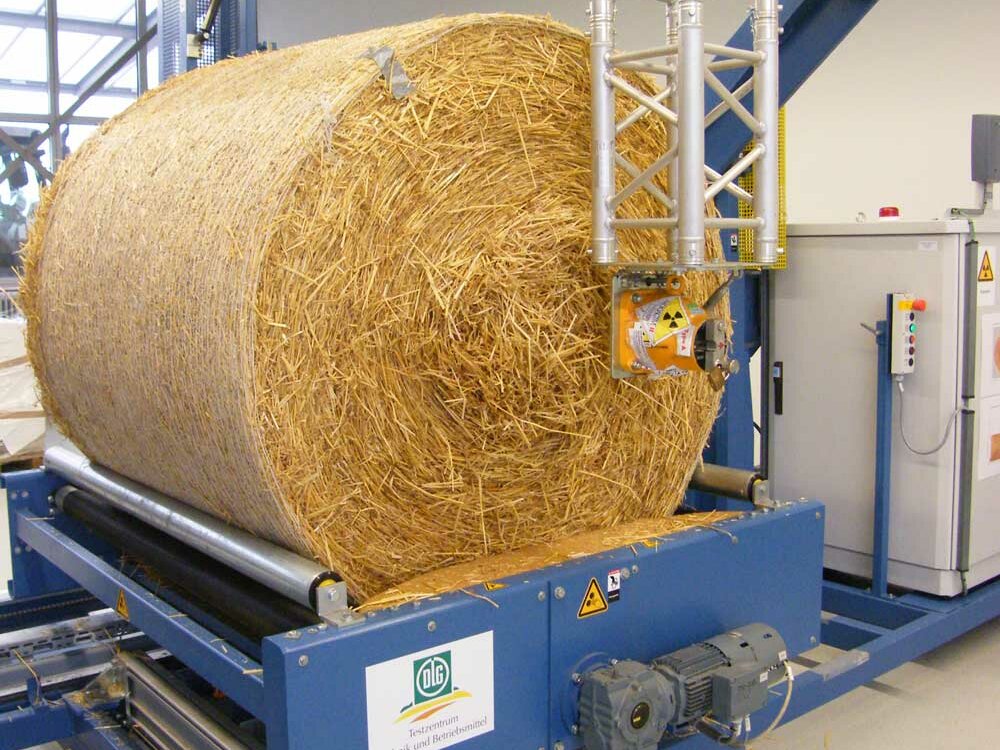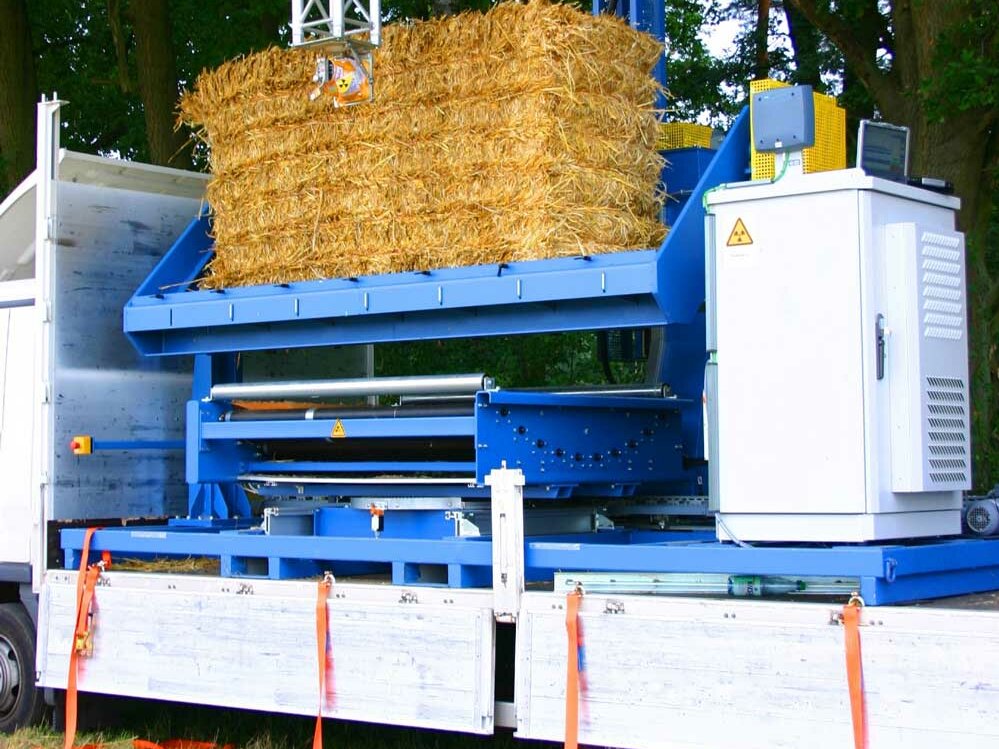Bale density measurement: Non-destructive screening
By Dr Frank Volz, DLG Test Center Technology and Farm Inputs
How tightly a bale is pressed and what density distribution should be set (in the case of variable round balers) depends on many factors. In addition to the type of crop (silage, hay, straw), the harvesting time, the dry matter content (DM) and the cutting length, the baler itself plays a significant role.
Incorrect bale density has the potential to cause not inconsiderable feed losses: areas that are too poorly compacted with a high air content can lead to mould and, especially in silages with a high DM content, to faulty fermentation. If the core of round bales is too firm when pressing silage, it may no longer be possible to process it in the feed mixer. In the case of moist hay, drying from the inside out is advantageous, so that a rather soft core is often desired here as well.
The bale casing, on the other hand, must be very firm to provide protection against moisture penetration. If the density distribution is not right, the bale can also deform massively. This reduces storage stability and makes silage bales more difficult to handle when wrapping. In the further course, air pockets and condensation can form directly under the film - these also reduce the forage quality considerably.
Radiometric measuring method
The DLG Test Centre uses a radiometric method for density measurement, i.e. the bale is illuminated with the aid of a radioactive emitter and a detector on the opposite side of the bale is used to determine the proportion of radiation that remains after passing through the bale. The radiometric measurement method has been verified several times by core drilling and weighing.
A caesium-137 gamma emitter with 5,550 MBq (megabecquerel) total activity is used as the radiation source. The decrease in the emitted radiation correlates with the distance between the emitter and the detector, the layer thickness of the transilluminated material and its density. Since distance and layer thickness are known, the only unknown is the density. However, this can be easily calculated, which is done by an evaluation unit integrated into the test stand already during the measurement. Gamma radiation is - like light - electromagnetic wave radiation. Starting from visible light, the wavelengths become shorter and shorter towards the UV range and the radiation energy increases. The ultraviolet light range is followed by X-rays and finally gamma radiation. The latter is the most energetic radiation in the electromagnetic spectrum and includes all wavelengths smaller than 30 pm. The transition from X-rays to gamma radiation is smooth. Gamma radiation does not affect the crop in any way during the measurement; the bale is therefore not radioactive after the measurement.
Due to the use of a radioactive source, the ongoing bureaucratic effort for the measurements is comparatively high. However, with no other method is a non-destructive, thus repeatable and high-resolution measurement of bale density possible - even on silage bales that have already been wrapped. Incidentally, the health risk is low when handled properly. The dose of a day's work, for example, is a factor of ten to a hundred less than that to which one is exposed due to a transatlantic flight.
Mobile bale density test stand
In order to be able to carry out high-resolution measurements in the field as well as in the laboratory, the DLG Test Centre has developed a mobile density test stand.
This combines a horizontally and vertically movable measuring unit with a bale table that can be adapted to the respective bale type. For square bales it can be tilted, for round bales it can be rotated and is equipped with rotating rollers. Round bales can thus be scanned axially (without vertical travel) and radially (with or without vertical travel) in a total of three different measuring patterns, and square bales horizontally and laterally in two measuring patterns. The axes are driven by electric motors.
The design allows bale dimensions, the distance between the measuring points and measuring planes as well as the measuring time to be freely selected at each measuring point.
Securing quality - DLG bale density test
Quite often the outer appearance of a bale says nothing about its density distribution inside. Even very dimensionally stable and very well cylindrical round bales can show clearly different or even uneven distributions of bale density. The effects of such poor compaction often only become apparent much later, for example when the silage bale can no longer be fed due to trapped air. With the DLG bale density test stand, the working quality of round and square balers can therefore be determined neutrally and objectively on the working result. If the driving strategies, baling pressure, cutting length, etc. are varied during the tests, a relatively clear picture of the performance potential of a baler is obtained.




